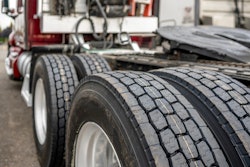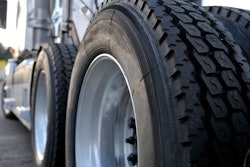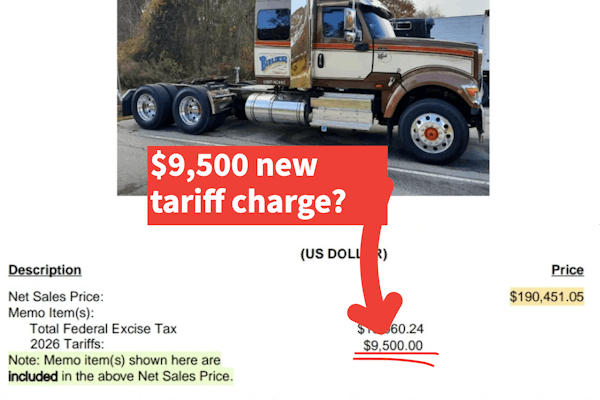An effective fuel-buying practice is to maximize fuel purchases in low-fuel-tax states and mileage run in those states. The International Fuel Tax Agreement between the United States and Canada facilitates the reporting, collection and distribution of taxes to states and provinces.
You pay taxes every time you fuel, but your ultimate fuel tax bill is calculated according to where you drive. If you purchase fuel in high-tax states and drive most of your miles in lower-tax states, you will get a refund when you file your IFTA report.
You cannot reduce your tax outlay unless you choose hauls that avoid high-tax states. What you have more control over, though, is how much you pay strictly for fuel when the fuel tax is not considered.
PUMP PRICE MINUS TAXES = REAL COST. The key to finding the cheapest fuel is to know the current fuel tax rates, both federal and state, and any state surcharges. Subtract taxes to find the raw fuel cost in each state, then buy where fuel is cheapest. The strategy means that you buy without regard for whether you are paying more at the pump -- or in taxes.
Depending on your routes, it might pay fuel-expense dividends even when the pump price appears higher. For instance, after conducting his own analysis, 2025 Trucker of the Year contender owner-operator Scott Smith found fuel stops along a regular route through the high-fuel-tax state of Illinois in fact offered the lowest fuel cost when taxes were removed. He made it a practice of buying there as often as possible, reducing his fuel expense and often enough ensuring an IFTA tax refund after filing.
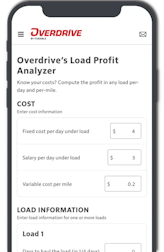
IFTA also considers state surcharges, which complicates the fuel-buying strategy. Indiana, Kentucky and Virginia have per-gallon surcharges; Connecticut, Kentucky, New Mexico, New York and Oregon have per-mile surcharges. While some owner-operators buy only enough fuel to get through surcharge states, this practice can backfire, depending on the actual cost of the fuel in each state.
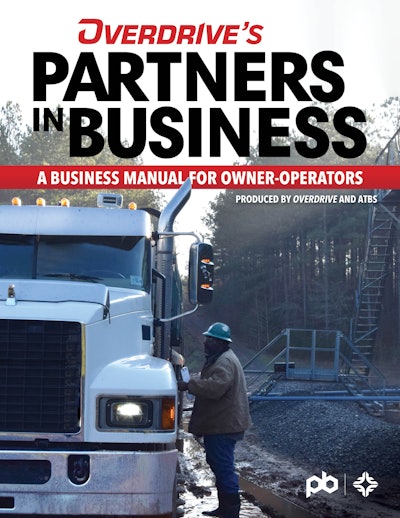 This feature is part of Overdrive's coproduction with business services firm ATBS of the Partners in Business manual, a comprehensive playbook for owner-operator careers. Browse the 2025 edition in its new dynamic online library format in eight sections via this link.
This feature is part of Overdrive's coproduction with business services firm ATBS of the Partners in Business manual, a comprehensive playbook for owner-operator careers. Browse the 2025 edition in its new dynamic online library format in eight sections via this link.
As suggested by owner-operator Smith's example, it’s possible to accumulate not only a debt but a credit, depending on just what states you purchase fuel in versus where you actually drive the bulk of your miles. Also, the higher your IFTA mpg, the lower your tax per mile, but the IFTA mpg will likely be different from what you are tracking in your truck day to day, given its quarterly calculation is based on actual purchases and miles driven over that specific time period.
Other fuel-buying costs depend on how your fuel taxes are managed. Many leased owner-operators depend on a carrier to collect and distribute fuel taxes.
If you’re leased and your carrier handles your fuel taxes for you, simply look for the cheapest pump prices. Some carriers charge a fee for this, and some pay simply by averaging the mileage of their entire fleet. If your carrier does that, and you average a better per-gallon average than the fleet, you could be paying more tax than you actually owe.
Whatever the case, a good lease will itemize all charges, including fuel taxes and how they are assessed. If your settlements do not reflect what is stated in your lease, you should ask for clarification and, if necessary, look for an alternate method of paying your tax.
You must get your own IFTA account to do your own fuel tax reporting, whether you do it yourself or through a third party. You do not have to have your own operating authority to get an IFTA account, but independent owner-operators must have such an account in their base plate state and be responsible for quarterly reporting.
Getting with the program
Owner-operators often can save a hefty amount of money when they are able to participate in discount fuel networks.
If your fleet has a fuel-optimizer program, use it. An optimizer program helps an owner-operator plan a trip based on fuel prices and locations in the carrier’s fuel network. Fees for using such networks have become rare thanks to competition for drivers.
Owner-operators are well advised, however, to pass up network fuel stops that are too costly, are too far off route, sell inferior fuel, are dangerous or poorly maintained, or are perceived as a profit center for the carrier at owner-operators’ expense. If you have concerns about a stop on the fleet network, respectfully bring them to the fleet’s attention.
The National Association of Small Trucking Companies offers members the opportunity to tap into the association’s network of fueling stops to find the lowest prices. In recent years, many independents have found substantial per-gallon discounts available through participation in the Mudflap mobile payments service's network of independent truck stops, too, likewise a myriad fuel cards available to members of other discount networks.
Read next: Controlling tire costs: Keep your No. 2 variable expense to a minimum
